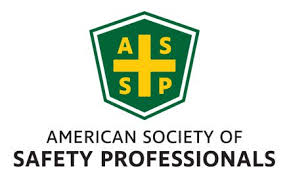
Risk and uncertainty in the workplace are dynamic and continuously evolve as conditions and technologies change. Occupational safety and health professionals can learn about the latest techniques and implementation strategies to combat risk and better protect workers in a new technical report published by the American Society of Safety Professionals (ASSP).
ASSP TR-31010-2020 Risk Management – Techniques for Safety Practitioners is designed to assist safety practitioners and company decision-makers in understanding, assessing and managing risk in all industries so organizations can achieve their business objectives. The guidance document was developed by the U.S. Technical Advisory Group (TAG) for the ISO/TC 262 risk management technical committee. The report’s techniques expand on the principles and processes of ANSI/ASSP/ISO 31000 Risk Management and other workplace risk standards.
“Risk should be viewed as a continuum that requires constant monitoring and management,” said TAG Chair Bruce Lyon, P.E., CSP, ARM, SMS, CHMM. “The degree of uncertainty can be difficult to measure and communicate within an organization, but it can be reduced through a strong commitment to risk management.”
The technical report provides expert guidance on the selection, modification, combination and application of 50 risk management techniques used to help improve the way risk and uncertainty are managed. It includes basic techniques for industry newcomers and complex methods for seasoned safety professionals. The safety resource explains the fundamentals of risk assessment and risk treatment and covers prevention-through-design practices that are applicable throughout the life cycle of a system. Safety professionals can apply the techniques to a range of occupational settings, situations and operational stages of a business.
“Risk management techniques should be used by an organization within all steps of the risk management process,” said TAG Vice-Chair Georgi Popov, Ph.D., CSP, ARM, SMS, QEP, CMC, FAIHA. “That systematic course of action includes establishing context, identifying and analyzing risk, evaluating and treating risk, monitoring and reviewing risk, recording and reporting risk, and communicating risk.”
The prevention-through-design component is considered by experienced safety professionals to be the most effective and lasting way to avoid or reduce risk in an operation. It also reduces residual risks that may surface.
As new risks emerge in the workplace, ASSP works to develop educational resources for safety and health professionals, whose mission is to protect workers on the job so they can return home safe and healthy each day. ASSP TR-31010-2020 not only considers current risk management needs, but looks toward the future.
A digital copy of the new technical report can be purchased separately from the ASSP Store or as part of ASSP’s risk management package.
About ASSP – Working together for a safer, stronger future
For more than 100 years, the American Society of Safety Professionals has been at the forefront of helping occupational safety and health professionals protect people and property. The nonprofit society is based in the Chicago suburb of Park Ridge. Its global membership of nearly 40,000 professionals covers all industries, developing safety and health management plans that prevent injuries, illnesses and deaths. ASSP advances its members and the safety profession through education, advocacy, standards and a professional community. Its flagship publication, Professional Safety, is a longtime leader in the field. Visit www.assp.org and follow us on Twitter, Facebook and LinkedIn.